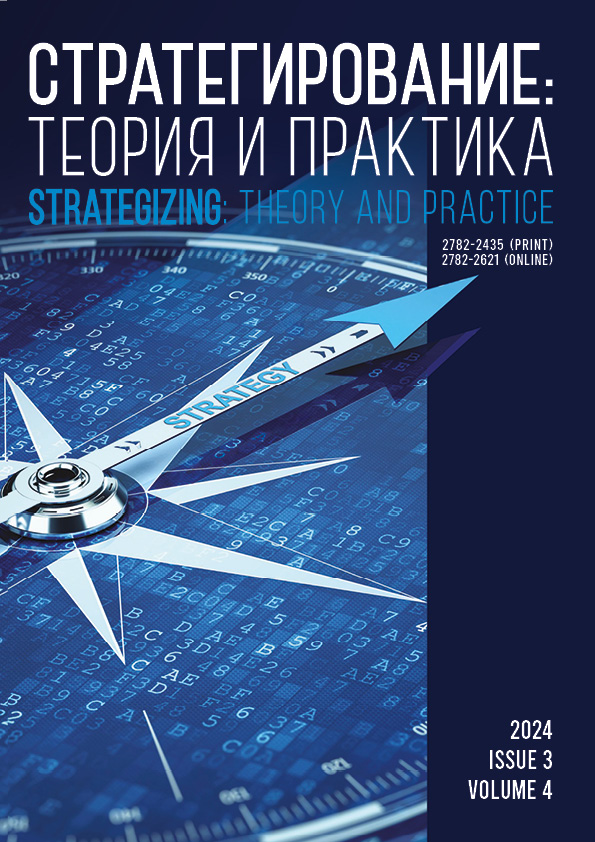Institute of Economics, Russian Academy of Sciences
Moscow, Russian Federation
Moscow, Russian Federation
Moscow, Russian Federation
As western sanctions affect Russia’s foreign policy, its foreign trade policy takes a turn to the East. Econometric modelling applied to the strategy of trade flows may reveal some important factors that affect the volume of Russian trade with Asian countries. The authors assessed the prospects for the development of trade relations between Russia and some countries of East and South-East Asia. The study focuses on international trade relations between the Russian Federation and some countries of East and South-East Asia, i.e., China, India, Vietnam, and Singapore. The methods included econometric and graphical modeling, as well as a comparative analysis. The gravity model confirmed Russia’s reorientation to the East. However, the geographic distance has a negative impact on the trade volume, increasing the delivery cost and time. Free trade areas, on the other hand, facilitate the trade, e.g., with Vietnam and Singapore. According to the gravity model, the coming years will witness an increase in the trade cooperation between the Russian Federation and the abovementioned Asian countries as Russia’s foreign trade policy gathers pace in the new geopolitical reality. A potential free trade area will strengthen Russia’s trade bonds with the People’s Republic of China.
trade cooperation, international trade, Russian Federation, countries of East and South-East Asia, sanctions, gravity model
1. Bulychev GB, Yakovlev AA. The potential of Russia–DPRK cooperation: economic advantages and political disadvantages. Journal of the New Economic Association. 2023;1(58):172–181. (In Russ.) https://doi.org/10.31737/22212264_2023_1_172
2. Vardomsky LB. International transport corridors in the context of development of Russia's transit potential. Challenges and policy of Russia's spatial development in the 21st century. KMK Scientific Press. Moscow; 2020. P. 94–111. (In Russ.)
3. Zhilkin ON, Balashova SA, Abramova AA. Gravitational model: analysis of mutual trade of the Eurasian Economic Union countries. Vestnik Universiteta. 2023;(11):179–187. (In Russ.) https://doi.org/10.26425/1816-4277-2023-11-179-187
4. Kvint VL. Global emerging market – impact on Russian strategy and strategic development of Russian companies. Effective Crisis Management. 2012;72(3):50–61. (In Russ.)
5. Kvint VL, Novikova IV, Alimuradov MK. Alignment of global and national interest with regional strategic priorities. Economics and Management. 2021;27(11):900–909. (In Russ.) https://doi.org/10.35854/1998-1627-2021-11-900-909
6. Nevadovskaya IE, Saprykin YuA, Grigorieva KA. Features of foreign trade activities of India and Russia in the context of sanctions. Economy and Business: Theory and Practice. 2023;12-1(106):161–164. (In Russ.) https://doi.org/10.24412/2411-0450-2023-12-1-161-164
7. Nikitina MG, Naumenko RV. To the issue of bilateral economic relations of India and Russia. Problems of modern economics. 2017;1(61):147–152. (In Russ.)
8. Semedov SA, Shilova AV. The ITC project “North - South”: problems and development under the sanctions. Observer. 2023;2:52–61. (In Russ.) https://doi.org/10.48137/2074-2975_2023_2_52
9. Tomaev AO, Kaukin AS, Pavlov PN. Russian domestic trade: applying the gravity model for rail cargo flows. Economic Policy. 2020;5:60–89. (In Russ.) https://doi.org/10.18288/1994-5124-2020-5-60-89
10. Turaeva MO, Yakovlev AA. Russian-Vietnamese economic cooperation in new conditions. Journal of the New Economic Association, 2023;1(58):165–172. (In Russ.) https://doi.org/10.31737/22212264_2023_1_165
11. Khvorostyanaya AS. Strategizing Singapore’s creative economy: experience in workforce development. Economics of Sustainable Development. 2023;54(2):136–140. (In Russ.) https://doi.org/10.37124/20799136_2023_2_54_136
12. Zhu Xu. Strategic triangle ‘Russia – India – China’: Structure and problems of interaction. Lomonosov World Politics Journal. 2023;15(4):107–141. (In Russ.) https://doi.org/10.48015/2076-7404-2023-15-4-107-141
13. Yakovlev AA. Prospects of trade cooperation between post-Soviet countries and China (calculations based on the gravity model). Innovation & Investment. 2017;2:57–60. (In Russ.)
14. Yakovlev AA. Problems and prospects of economic cooperation between the people's republic of china and post-soviet countries. Economics and Management. 2020;26(4):380–391. (In Russ.) https://doi.org/10.35854/1998-1627-2020-4-380-391
15. Russian "Neighborhood Belt" Under of the Sanctions War: Scientific Report / ed. LB Vardomsky. Moscow: Institute of Economics of the Russian Academy of Sciences; 2022. 118 p. (In Russ.)
16. Egger P, Pfaffermayr M. The proper panel econometric specification of the gravity equation: A three-way model with bilateral interaction effects. Empirical Economics. 2003;28(3):580.
17. Tinbergen J. Shaping the world economy: suggestions for an international economic policy. NY: Twentieth Century Fund.; 1962. 330 p.






